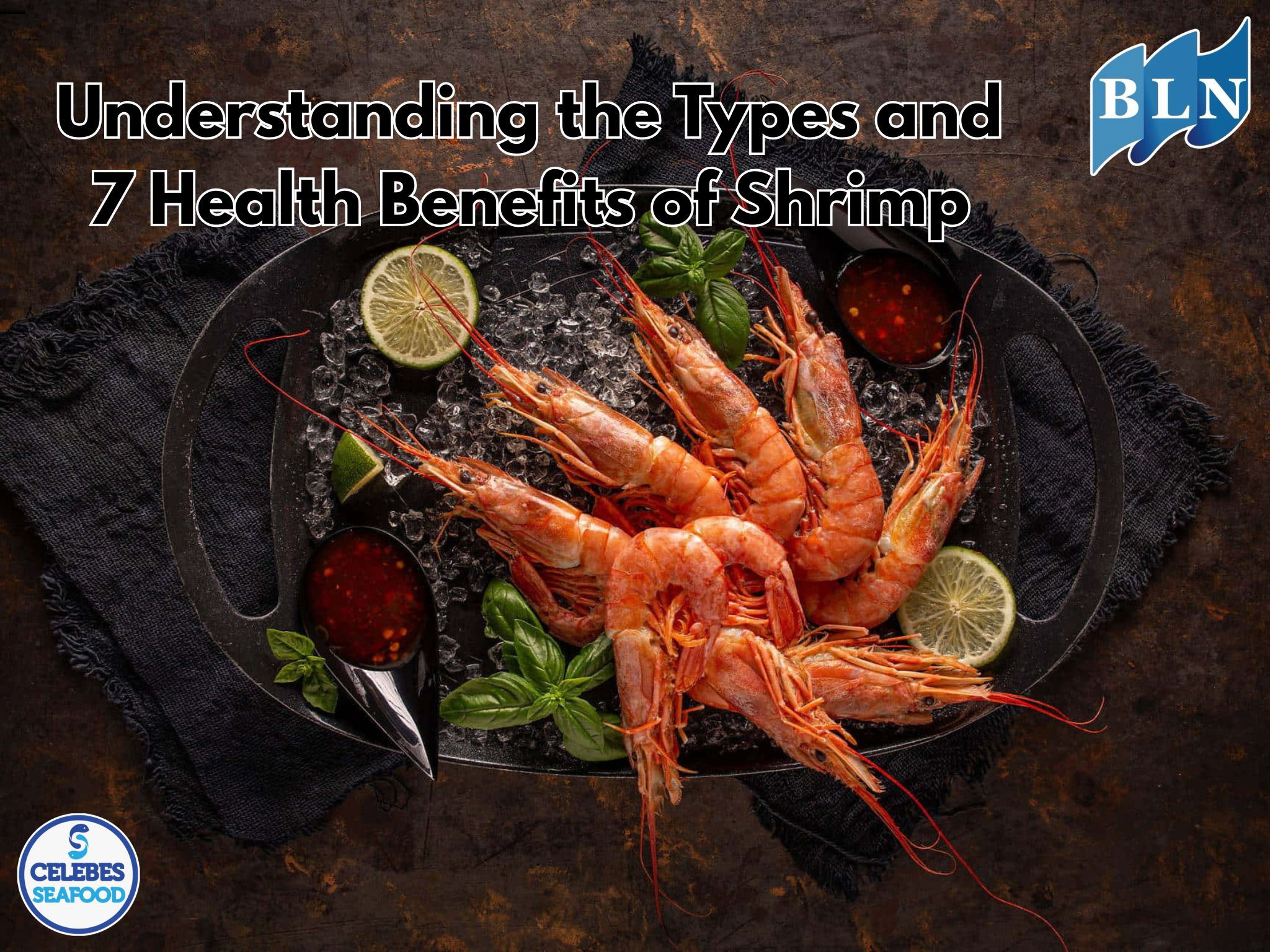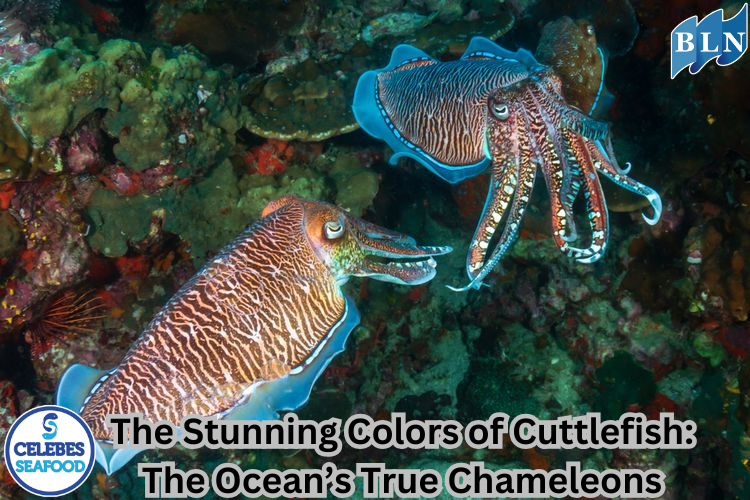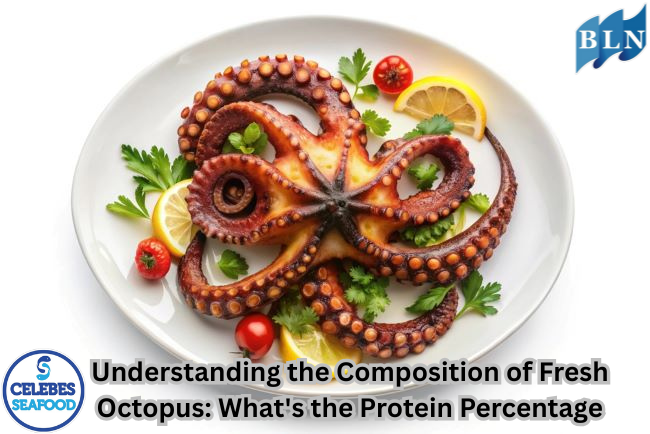Understanding the Types and 7 Health Benefits of Shrimp
By. Rani - 09 Aug 2025
lautnusantara.com Shrimp is a popular and distinct type of seafood. Its unique characteristics include a segmented body, an exoskeleton, a pair of claws, and the ability to swim using its tail and special swimming legs.
Besides being delicious, shrimp contains many nutrients, including iodine and antioxidants, which are beneficial for health.
So, what are the nutrients found in shrimp, what are the different types, and what are their benefits? Let's find out in the following explanation.
The Life Cycle of Shrimp
Shrimp have a unique life cycle that involves several stages:
-
Spawning: Females release eggs into the water, typically in marine environments. These eggs hatch within a few days.
-
Larval Stage: The newly hatched larvae, known as zoea, develop into mysis and then postlarvae. At this stage, the larvae live in open water and feed on plankton.
-
Juvenile Stage: After the larval phase, young shrimp (juveniles) begin migrating to shallow or estuarine waters to grow larger.
-
Adulthood: Upon reaching a certain size and age, the shrimp return to deeper marine waters to reproduce. This cycle then repeats.
Types of Shrimp
While there are over 300 species of shrimp, only a small fraction are commercially available.
Here are some types of seafood, with the scientific name Caridea:
-
White Shrimp
White shrimp are one of the most common types of shrimp found in traditional and modern markets. This seafood is also one of the easiest for you or your family to prepare. You can sauté it with garlic or fry it in batter.
-
Brown Shrimp
Brown shrimp live in shallow, sheltered waters with muddy and sandy bottoms. Their flavor is slightly saltier than white shrimp.
-
Rock Shrimp
Rock shrimp have a texture similar to lobster. They have a savory and sweet flavor. Rock shrimp are rarely stir-fried but are more commonly grilled or fried.
-
Pink Shrimp
This type is usually found on sandy or muddy coral bottoms. As they grow and reproduce, these sea creatures migrate toward deeper, saltier water.
-
Tiger Shrimp
Tiger shrimp have a stronger flavor than white shrimp. Their meat is also firmer and larger. They can grow up to 33 cm, with an average size of 22-27 cm.
-
Spot Shrimp
Spot shrimp have a sweet, soft flavor and firm texture. Their size varies, with some larger females exceeding 23 cm. This type lives along the rocky seabed at depths ranging from 40 to 100 meters.
Nutritional Content of Shrimp
Shrimp are rich in several vitamins and minerals and are a great source of protein.
Consuming shrimp can improve heart and brain health due to its content of omega-3 fatty acids and the antioxidant astaxanthin.
Generally, a 85-gram serving of shrimp contains the following nutrients:
-
Calories: 84.2
-
Protein: 20.4 grams
-
Iron: 0.433 milligrams
-
Phosphorus: 201 milligrams
-
Potassium: 220 milligrams
-
Zinc: 1.39 milligrams
-
Magnesium: 33.2 milligrams
-
Sodium: 94.4 milligrams
Shrimp is also one of the best food sources of iodine. The body needs iodine to support proper thyroid function and good brain health. Shrimp are also a source of omega-3 fatty acids.
This seafood is also a source of B vitamins, which are beneficial for red blood cell production. These include vitamins B12 and folate. These vitamins play a critical role in energy production and red blood cell formation.
Benefits of Consuming Shrimp
Each type of shrimp has a different nutritional content, so their benefits can vary. Nevertheless, here are the general benefits of shrimp:
-
Prevents Atherosclerotic Cardiovascular Disease
According to the study Potential Anti-Atherosclerotic Properties of Astaxanthin, published in the MDPI Journal, shrimp is rich in astaxanthin. This compound can prevent atherosclerotic cardiovascular disease. It can inhibit LDL (Low-density lipoprotein) and increase HDL (High-density lipoprotein).
-
Supports Thyroid Gland Function
Seafood like shrimp is a useful source of several minerals, such as iodine, zinc, and selenium. The body needs iodine to support proper thyroid gland function. Meanwhile, zinc and selenium support the immune system.
-
Beneficial for Skin
The reddish-pink color of this seafood is due to the compound astaxanthin. This compound has anti-inflammatory properties and can reduce the risk of several chronic diseases. Additionally, according to the scientific journal Effects of Astaxanthin Supplementation on Skin Health: A Systematic Review of Clinical Studies, astaxanthin supplements can improve skin damage. This includes improving skin texture, appearance (wrinkles), and protecting against skin damage from UV rays.
-
Supports Weight Loss
In addition to antioxidants, this food is also a source of high-quality protein. It is also low in calories and fat.
-
Helps Build Muscle
Shrimp is a nutrient-rich, low-calorie food. Just 100 grams of shrimp contains only 115 calories and just 1.72 grams of fat.
Additionally, shrimp contains a lot of zinc and iodine. A deficiency of these two substances is linked to overeating, weight gain, and a decrease in muscle mass.
-
Prevents Cancer
Shrimp are an abundant source of selenium, which can inhibit the growth of cancer cells in the body. Therefore, including shrimp in your daily diet can help protect the body from the potential risk of cancer.
-
Enhances Skin Rejuvenation
The selenium and vitamin E in shrimp are natural antioxidants that help protect skin cells from damage caused by free radicals and environmental pollution. This can help keep skin healthy and protected.
Interestingly, the protein content in shrimp helps in the regeneration process of damaged skin cells. Protein also helps speed up the healing process of skin wounds.
Read Also : Indonesia's Maritime Potential: Opportunities and Challenges to Become a Global Maritime Axis
Risks of Consuming Shrimp
Despite the many benefits, there are also risks to consuming shrimp that you need to be aware of:
-
Allergies
Shrimp is in a group of seafood that often triggers allergies in some people. Allergy symptoms can be mild, such as rashes and itching, to severe, such as shortness of breath, swelling, or anaphylaxis, which requires immediate medical attention. Therefore, individuals with a history of seafood allergies should avoid shrimp.
-
High Cholesterol Content
Shrimp has a relatively high cholesterol content, around 161 mg per 100 grams. Although the cholesterol in shrimp is accompanied by healthy unsaturated fats, people with high cholesterol or heart disease should limit their consumption. It is best to consume shrimp in moderate amounts and balance it with a diet low in saturated fat.
-
Heavy Metal Contamination
Shrimp from polluted waters can contain heavy metals such as mercury, cadmium, or lead. Continuous exposure to heavy metals can cause damage to organ functions, such as the kidneys and brain. To reduce this risk, choose shrimp from a trusted source with food safety certification.
-
Risk of Bacterial or Viral Infection
Shrimp that are not fresh or are improperly cooked can carry bacteria like Vibrio or foodborne viruses. Make sure to clean and cook shrimp to a high enough temperature to kill harmful pathogens.
-
Nutritional Imbalance if Consumed in Excess
Although shrimp are rich in nutrients, excessive consumption can lead to a nutritional imbalance due to their high cholesterol and sodium content. This can trigger health problems, such as high blood pressure or an increased risk of cardiovascular disease.
These are the types and seven benefits of shrimp for body health. So, are you interested in consuming them? Make sure you and your family always meet your intake of important nutrients by eating healthy foods like shrimp.
If you are interested in our Goldband Snapper Fillet Skin On, Goldband Snapper Fillet Skinless please do not hesitate to contact us through email and/or whatsapp.


.jpg)




